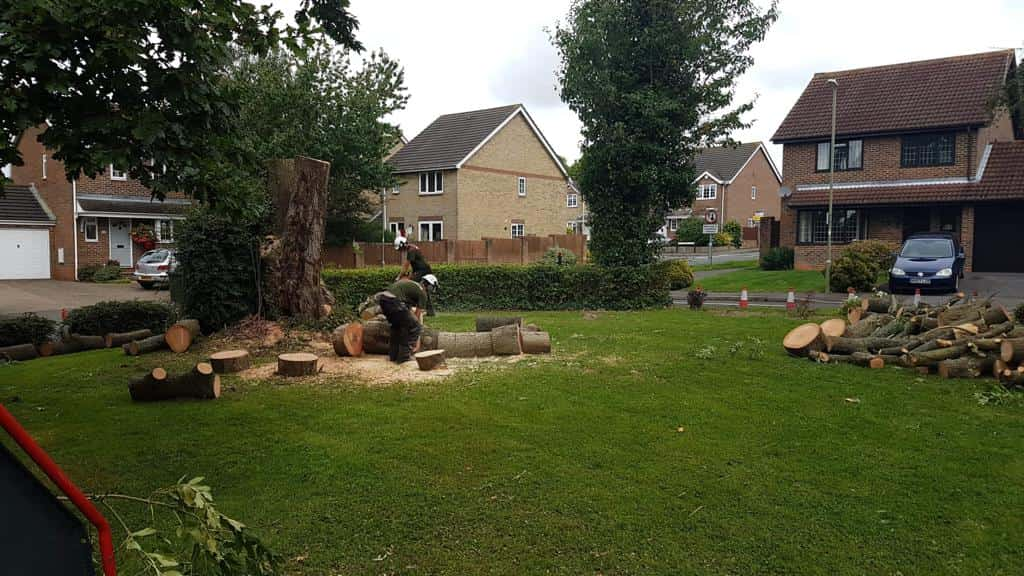Trees are a vital part of our landscapes, offering beauty, shade, and ecological value. However, there are times when even the most beloved trees can become a danger or obstruction, making removal the only safe and practical option. Recognising when a tree has reached this point can prevent damage to property, protect people, and safeguard the long-term health of your garden or site. NS Tree Surgery Aldershot provides professional tree assessments and removals across Aldershot, Hampshire, ensuring that when removal is necessary, it’s carried out safely, efficiently, and responsibly.
Understanding Why Tree Removal May Be Necessary
Not all trees that appear unhealthy need to be removed. Many issues can be corrected through pruning, crown reduction, or disease treatment. However, there are circumstances where a tree poses too great a risk to remain standing. Knowing the warning signs can help property owners make informed decisions before a problem becomes hazardous.
Key Signs That Tree Removal Is Unavoidable
1. Severe Structural Instability
A tree’s stability depends on its roots, trunk, and overall structure. When any of these are compromised, the tree can become unsafe.
Signs of instability include:
- A noticeable lean that has developed suddenly.
- Cracks or splits running down the trunk.
- Uplifted soil or exposed roots near the base.
- Hollow areas within the trunk indicating decay.
Once the tree’s structure is weakened, especially near buildings or public areas, removal becomes the only way to eliminate the risk of collapse.
2. Extensive Decay or Disease
Certain diseases and fungi can destroy a tree from the inside out. While early treatment can sometimes save affected trees, extensive internal decay often cannot be reversed.
Common indicators include:
- Mushroom-like growths at the base or along the trunk.
- Flaking or falling bark.
- Dead or brittle branches across the canopy.
- Discolouration or hollowing in the wood.
NS Tree Surgery Aldershot can assess whether decay has reached a point where removal is necessary to protect surrounding trees and prevent disease spread.
3. Root System Damage
Roots anchor the tree and absorb essential nutrients. When damaged — whether by construction, soil compaction, or disease — the tree may lose its stability and ability to thrive. Symptoms of root problems include:
- Reduced leaf growth or premature leaf drop.
- Soil heaving around the base.
- Leaning despite no wind or external pressure.
- Roots visibly decaying or severed.
If the root system is compromised beyond recovery, removal is often the safest solution to prevent uprooting during storms or high winds.
4. Irreversible Storm Damage
Severe weather can cause immediate and significant damage to trees, breaking major limbs or splitting the trunk. In some cases, emergency pruning can restore balance and safety, but when the main structural framework is lost, removal is often unavoidable.
After major storms, NS Tree Surgery Aldershot conducts safety inspections to identify trees that are too damaged to recover, preventing potential hazards before they worsen.
5. Encroachment on Structures or Utilities
Even healthy trees can become problematic if they grow too close to buildings, driveways, or power lines. Roots can damage foundations, and overhanging branches may obstruct light, gutters, or roofs.
In these situations, removal may be necessary to prevent costly damage or accessibility issues. Regular maintenance can delay this need, but sometimes the only viable long-term solution is to remove the tree entirely.
6. Dead or Dying Trees
When a tree has lost its vitality and no longer produces healthy foliage, it becomes a risk. Dead trees quickly lose structural strength, and branches or trunks can fail without warning.
Deadwood also attracts pests such as beetles and termites, which can spread to healthy trees. A professional inspection can confirm when a tree is past the point of recovery and should be safely removed.
7. Unmanageable Growth or Poor Placement
Some trees simply outgrow their surroundings. Species that were once small can eventually overshadow homes, restrict light, or interfere with other plants.
In tight spaces or small gardens, removal might be required to maintain harmony and prevent overcompetition for sunlight and nutrients.
Why Professional Assessment Is Essential
Determining whether tree removal is necessary isn’t always straightforward. Some symptoms may appear severe but can be managed through selective pruning or other treatments. Professional arborists from NS Tree Surgery Aldershot are trained to evaluate the full health of a tree — from canopy to root system — to decide whether removal is truly unavoidable.
A professional assessment includes:
- Visual inspection for disease, decay, and instability.
- Evaluation of root health and soil condition.
- Risk analysis for nearby structures, utilities, and public areas.
- Recommendations for removal or alternative care methods.
This thorough approach ensures that only trees that pose a genuine risk or have reached the end of their life cycle are removed.
The Tree Removal Process
When removal is required, safety and precision are paramount. The process typically includes:
- Planning and risk assessment – Determining the safest removal method based on the tree’s size, location, and surrounding area.
- Sectional dismantling – Cutting the tree down in manageable sections to avoid damage to nearby property or plants.
- Stump grinding – Removing the remaining stump to prevent regrowth and restore the ground for replanting or landscaping.
- Site clearance – Ensuring all waste and debris are safely removed, leaving the area clean and ready for use.
The team at NS Tree Surgery Aldershot follows industry best practices to ensure each removal is carried out efficiently and with minimal disruption.
Preventing Unnecessary Tree Removal
While removal is sometimes inevitable, preventive care can often delay or avoid it. Regular pruning, disease management, and soil care help trees remain strong and stable. Early professional inspections can identify potential problems before they become dangerous, allowing for corrective action such as crown thinning or bracing instead of full removal.
For property owners in Aldershot, Hampshire, scheduling routine maintenance with NS Tree Surgery Aldershot ensures your trees remain healthy, attractive, and safe for years to come.
Conclusion
Tree removal should always be a last resort — but when a tree becomes unstable, diseased, or poses a risk to safety, timely action is essential. Recognising the warning signs early and consulting experienced professionals can prevent accidents and protect surrounding vegetation. For homeowners and businesses in Aldershot, Hampshire, NS Tree Surgery Aldershot provides trusted, expert tree care services, ensuring that when removal is unavoidable, it’s done safely, responsibly, and with respect for your property and the environment.
Call us on: 01252 986 199
Click here to find out more about NS Tree Surgery Aldershot
Click here to complete our contact form and see how we can help with your trees needs.

